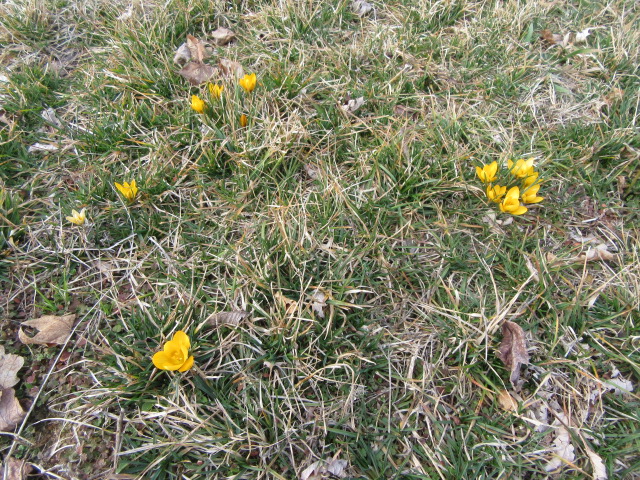
Crocus sp. near the southeast corner of the foundation on 2-21-24.
Hello everyone! I hope this post finds you well. February is coming to a close and I always wondered why the shortest month of the year seems to last so long. Tuesday, I was in town and a friend said his Crocus were starting to come up, so I checked the plants in the “other yard” to see what they were doing. As usual, the Crocus there were already blooming up a storm.
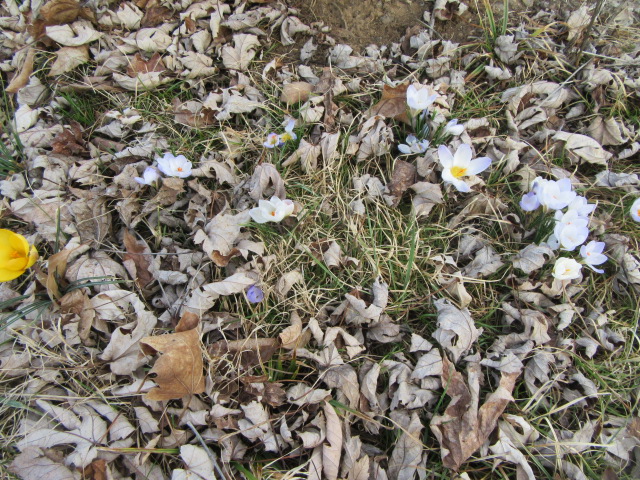
Crocus sp. next to the northwest corner of the foundation on 2-21-24.
They have been coming up in two areas close to the foundation of my grandparent’s old house since 2019 (or 2018) out of the blue. The first photos I took of them was in 2019, but it seems like they came up before that. I’m sure if they did, though, I would have taken photos. Dad was still alive when I first saw them, and neither one of us had seen them before. I lived in my grandparent’s house from April 1981 to July 1987, and there were no Crocus… They are all yellow in a small area fairly close to the southeast corner of the foundation while next to the northwest corner, they are yellow, and a really pale blue.

Crocus sp. on 2-21-24.
It is a very good sign that spring is almost here when the Crocus starts blooming and the daffodils and tulips start coming up.
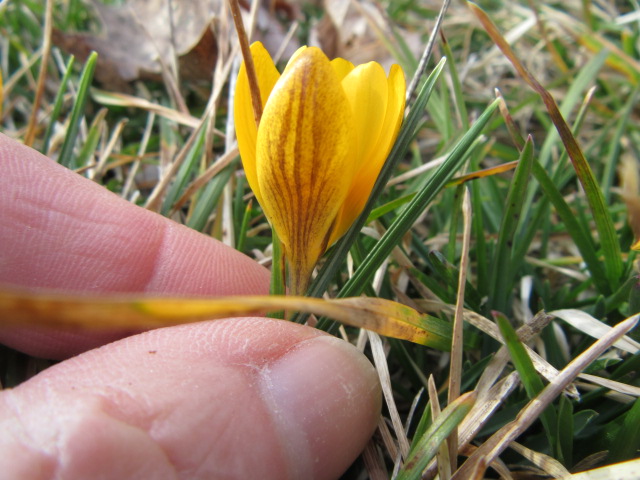
Crocus sp. on 2-21-24.
I guess the Crocus near the southeast corner aren’t really yellow, more like a golden yellow with maroon markings. They are growing in full sun and the soil in this spot is fairly sandy. I had a flower bed in this area when I lived here before, and I had to dig a big hole in the ground once to clean out the pipe that I thought went to the septic tank… Well, folks, there was no pipe. It was what I was told was “land tile” and there was no cement between the tile. I’m not sure if land tile is the proper name or not, but they were around a foot or so long and ran under the driveway. I never did find the septic tank nor could I find any land tile on the other side of the driveway… There is a deeper pipe that drains the basement. Well, that is just a memory that popped into my head…

Crocus sp. on 2-21-24.
The pale blue flowers are nearly white. The lower flower in the above is completely white…
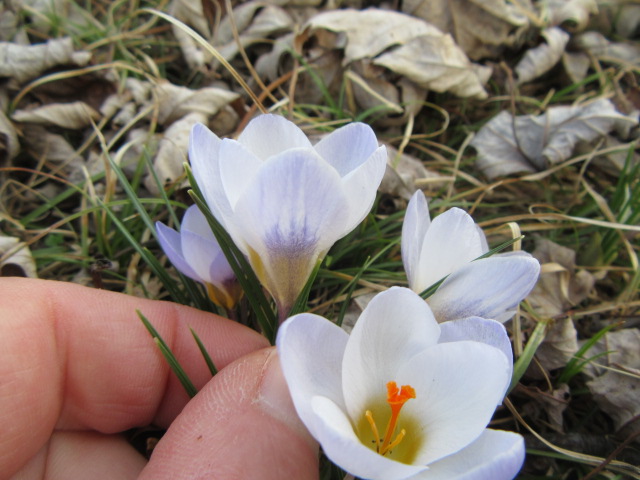
Crocus sp. on 2-21-24.
While the others have bluish-purple streaks.
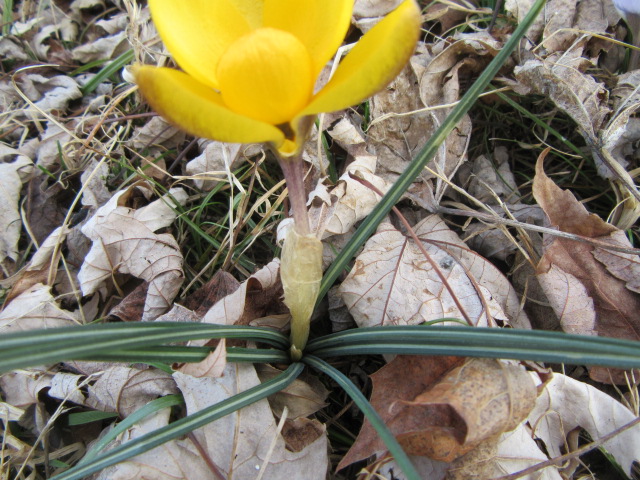
Crocus sp. on 2-21-24.
The leaves have a silver streak along the midrib. Some species form fruit in the area where the papery sheath is, but I checked the plants growing in the yard, and there was nothing there. I checked the spent flowers where the ovaries usually are on other plants, and saw nothing… Hmmm… If there are no seeds, where did these plants come from in the first place? Well, at some point, there have to be seeds so I will keep checking… Maybe not all flowers produce seeds… At any rate, they spread through bulb division, which they have done quite well.
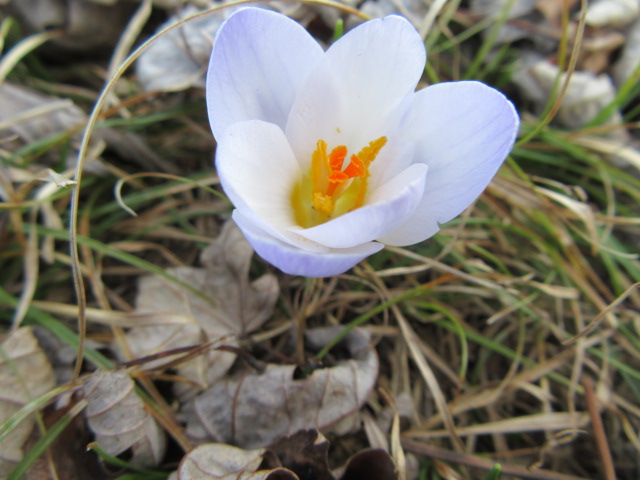
Crocus sp. on 2-21-24.
The flowers appear to be what is known as “perfect” having both male (staminate) and female (pistillate) flowers.
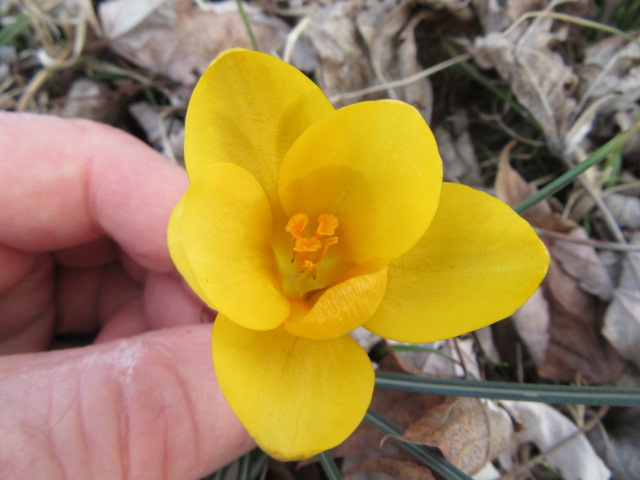
Crocus sp. on 2-21-24.
Some are a little farther along.
Finding out the species of these Crocus led me on a wild goose chase. You know how I need to know the species names… I figured they were a wild species, but apparently maybe not… I’m not sure.
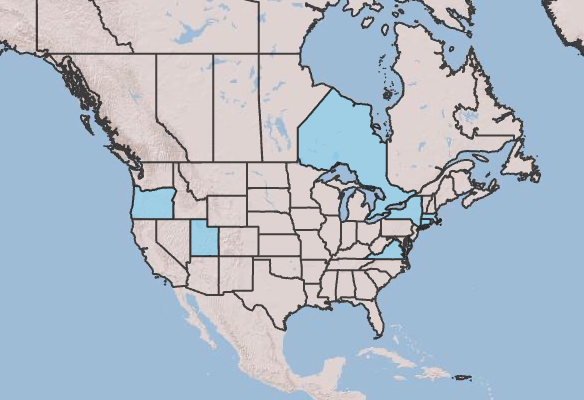
Distribution map for the Crocus genus from the USDA Plants Database. Published on the internet at https://plants.sc.egov.usda.gov/home. Retrieved on February 22, 2024.
The USDA Plants Database says there are no wild species in Missouri. In fact, all seven species listed are introduced… You can click HERE to see the maps for all seven species by clicking on subordinate taxa.
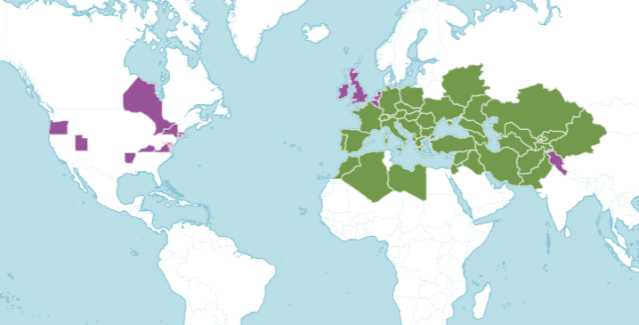
Distribution map of the Crocus genus from Plants of the World Online. Facilitated by the Royal Botanic Gardens, Kew. Published on the Internet; http://www.plantsoftheworldonline.org/. Retrieved on February 22, 2024.
Plants of the World Online lists currently lists 243 species in the Crocus genus. Areas in green are where the members of the genus are native and purple are where they have been introduced.

The above map shows where observations of Crocus have been made worldwide by iNaturalist members. The iNaturalist website is published on the internet at https://inaturalist.org. The iNaturalist website is a joint initiative of the California Academy of Sciences and National Geographic Society. This map was retrieved and shared on this site on February 22, 2024, by permission.
I checked out the observations on iNaturalist for Missouri and there were 19. None were verified. Well, except for one but it was observed in October so it doesn’t count. 🙂
As of 2-22-24, the map on iNaturalist shows 36,747 observations. I clicked on about 40 observations and less than 10 have been verified by other members making them Research Grade. Most of the observations are listed as Genus Crocus or Complex Crocus vernus. Some are listed with a species name, but still all but a few have been verified…
So, I did some research and read a little of several scientific documents online. You know, papers written by botanists and scientists. I could understand them somewhat, but they were way above my head. In a nutshell, Crocus species are very complicated and seem to be still evolving… Many species are very similar so it takes complicated lab work to figure them out.
Naturalized Crocus can be found on old homesites throughout the country just like Iris and daffodils. You can plant them in beds or in your yard where they come up and spread. The key is not to mow the area until the leaves have completely disappeared so they can store energy in the corms. If you mow them off before that, you will eventually lose your Crocus.
I guess what species that are growing in the yard will remain a mystery and I have to continue calling them Crocus sp. and be happy with it…
I am very glad we have been having mild temperatures this past week and will continue for a while.
Until next time, be safe and stay positive. It’s almost time to GET DIRTY!
YAY! It’s SPRING! I am so ready
LikeLiked by 1 person
Hello Linda! It sure feels like it, and with the Crocus blooming, it is beginning to look like it. I am ready, too! Take care and thanks for the comment!
LikeLiked by 1 person
I don’t feel quite so bad about not having crocus here in Texas, now that I know they’re not native anywhere in the country! They are pretty things, though. Even though I favor white flowers, I have to say those yellow ones with the striping are pretty darned nice. It’s like having little drops of sunshine around the yard. It must be wonderful to see them popping up, whatever their species, and however they got there!
LikeLiked by 1 person
Hello Linda! Seriously, I couldn’t believe there were no native species of Crocus here. The yellow flowers are by far the most showy. The weird thing is their ovaries are below ground and as the seeds ripen the peduncle (flower stem) gets longer then the seeds are above ground. I will have to keep an eye on that… The species will likely remain a mystery, but I am glad they are here to open the doorway to spring. Take care and thanks for the comment!
LikeLiked by 1 person
It is nice to see them coming up. I will watch for my daffodils after next week’s warmth.
LikeLiked by 1 person
Hello Jim! It is great to see them coming up. The daffodils are about 6″ tall next to the garage where they get plenty of sun to warm the soil. Take care and thanks for the comment!
LikeLiked by 1 person
Saffron is from Crocus … not so sure from which variety 😊
LikeLiked by 1 person
Hello there! Saffron comes from Crocus sativus. Take care and thanks for the comment.
LikeLike